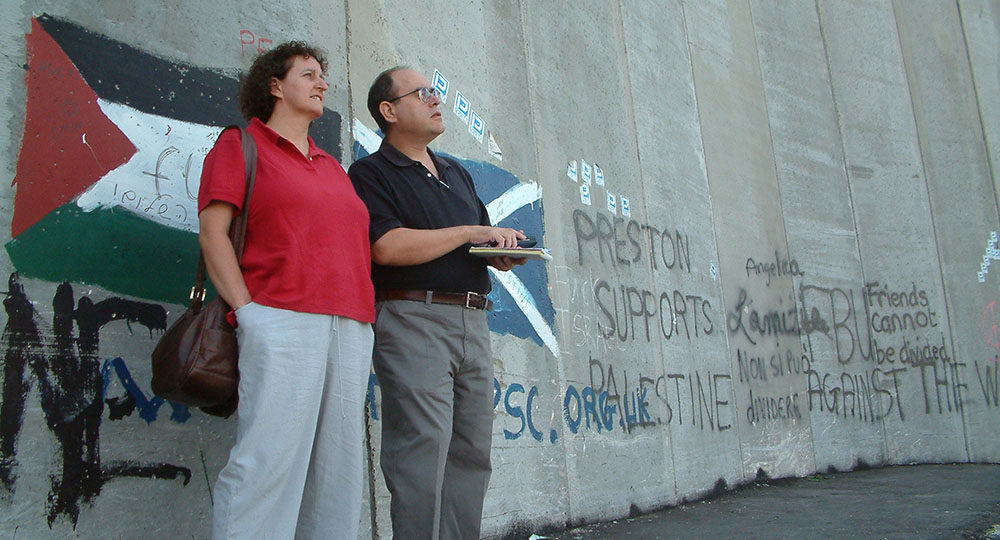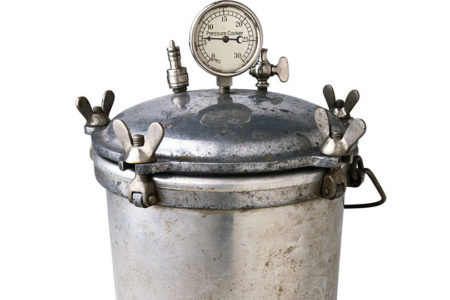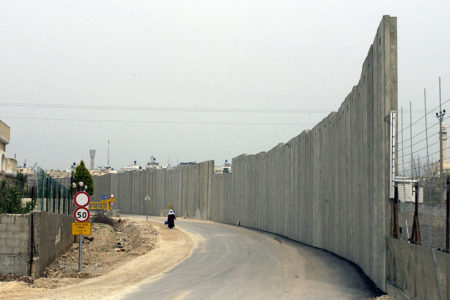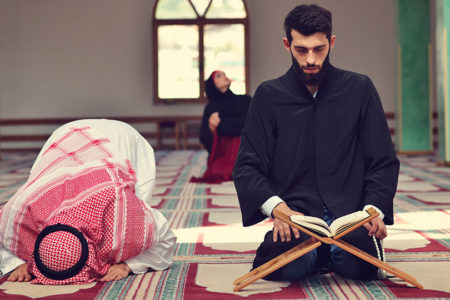Traveling the Fence Route
On a hot, dry, Friday morning in July, my wife, Lisa, and I traveled the entire length of the route of the fence that will envelop metropolitan Jerusalem. Starting in Gilo, we headed east toward Har Homa, Jerusalem’s newest neighborhood of high-rise apartment blocs situated on a ridge that, like Gilo, faces Bethlehem to its south.
Next we followed the eastern arc through the Arab neighborhoods (really villages) of Um Tuba, Jabal Mukhaber, and Tzur Baher. The Arab sector is Jerusalem’s poorest. The infrastructure is decrepit, and municipal garbage trucks can’t navigate the winding, hilly, poorly paved streets. Construction is slapdash.
Residents make ends meet by shopping in the West Bank where goods are much cheaper than in Israel. But when the barrier is fully in place, what is today a dash over to the West Bank to pick up some potatoes for dinner will become incomparably more difficult.
We continued over bumpy roads toward the outskirts of the Old City from the Arab—eastern—side of town. The closer we got, the more urban and densely populated the area became.
Just downwind from the Mount of Olives and Temple Mount is the Ras el-Amud neighborhood, home to 11,000 Jerusalem Arabs. We passed an incongruous compound created by the American Jewish millionaire Irving Moscowitz, who bought property here and built an urban Jewish settlement of 119 apartments called Ma’aleh Har HaZeitim (Mount of Olives Heights). I doubt that Ma’aleh Har HaZeitim, implanted as it is smack up against Ras el-Amud, is of any security value (there’s already a police station there anyway). What it does accomplish is to feed into the Muslim suspicion that the Jews are trying to displace the Arabs. It seems unnecessarily provocative.
‘Dirty of Dirties’
Shortly before noon we finally arrived at the “Eastern Wall,” the “dirty of dirties”—the ugliest section of the security fence and the segment that foreign journalists, photographers, and sundry “progressive” visitors come to in order to “witness” what Israel has “done.” I spotted Arik Ascherman of Rabbis for Human Rights, guiding a guest through the area.
We were in Abu Dis, a Jerusalem neighborhood that’s been cut down the middle by the security fence. The Palestinian parliament building stands on the Arab side.
Our side of the wall is vandalized by graffiti. “Witness the Jewish shame,” someone has scrawled. Someone else has painted a Palestinian flag. Pro-Arab propagandists have turned this section of the barrier into a “one-picture-is-worth-a-thousand-words” condemnation of Israel. You’re supposed to look at this monstrosity and see the Berlin Wall or maybe the Warsaw Ghetto wall. Whatever.
Meanwhile, as the wall becomes a reality and fewer terrorists are able to infiltrate from the West Bank, the less authority the Palestinian leadership will have on the Arabs on our side of the fence. That’s why Palestinian leaders are doing whatever it takes, from inter-national pressure at The Hague to backing violent protests at barrier building sites, to keep the wall from being completed.
As for the ugliness, Israeli authorities say that after its completion, the fence will have several well-appointed, air-conditioned border crossings plus scores of regular new check-points for farmers who need to reach their fields.
But for now, with the barrier still porous in many spots, Palestinians who don’t want to walk to the existing crossing points can be seen squeezing through tight crevices or climbing over cement blocks. Lisa and I watched as Israeli Border Police tried to control the inflow by inspecting identity cards.
When it is finally completed, per-haps in two years, the barrier will go all the way north to Kalandiya and Atarot. The former is the final checkpoint before Ramallah; the latter is the defunct Jerusalem airport, unusable because of its proximity to enemy territory.
Some Arab areas, such as the Shufat refugee camp, will be outside the fence (and thus in what is likely to become the state of Palestine). On the day we were there, residents had just set up a protest tent demanding to stay on the Israeli side. Meanwhile, the nearby Arab neighborhood, also called Shufat, will wind up inside the fence, and residents there are angry at being cut off from the West Bank.
With all the hassle, hundreds—perhaps thousands—of Arabs with blue Israeli ID cards are voting with their feet to be on the Israeli side of the security barrier. Others are trying to marry people who already have blue cards. The mad rush to remain under Israeli “occupation” is under way.






